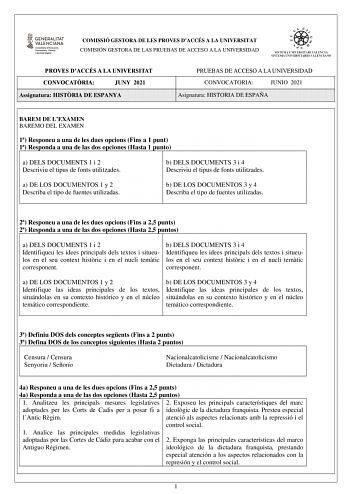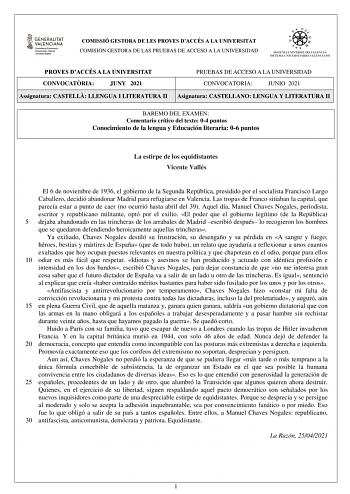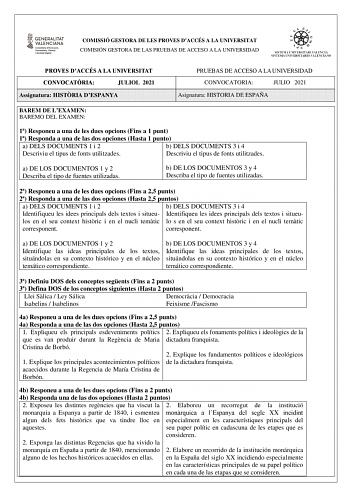Examen de Inglés de la Comunidad Valenciana (PAU de 2021)

| Comunidad Autónoma | Comunidad Valenciana |
|---|---|
| Asignatura | Inglés |
| Convocatoria | Extraordinaria de 2021 |
| Fase | Acceso |
Temas mencionados new_releases

Microplastics
Microplastics are small plastic particles in the environment that are generally smaller than down to the micrometre range. They can come from a variety of sources, including cosmetics, clothing, and industrial processes. Two classifications of microplastics currently exist: primary microplastics are manufactured and are a direct result of human material and product use, and secondary microplastics are microscopic plastic fragments derived from the breakdown of larger plastic debris like the macroscopic parts that make up the bulk of the Great Pacific Garbage Patch. Both types are recognized to…
Fuente: wikipedia.org
Mariana Trench
The Mariana Trench or Marianas Trench is the deepest part of the world's oceans. It is located in the western Pacific Ocean, an average of to the east of the Mariana Islands, in the Western Pacific east of Philippines. It is a crescent-shaped scar in the Earth's crust, and measures about long and wide on average. It reaches a maximum-known depth of (±) at a small slot-shaped valley in its floor known as the Challenger Deep, at its southern end, although some unrepeated measurements place the deepest portion at. For comparison: if Mount Everest were dropped into the trench at this point, its peak would still be over underwater. In 2009, the Marianas Trench was established as a United States National Monument.
Fuente: wikipedia.org
North Pole
The North Pole, also known as the Geographic North Pole or Terrestrial North Pole, is (subject to the caveats explained below) defined as the point in the Northern Hemisphere where the Earth's axis of rotation meets its surface.
Fuente: wikipedia.org
Mount Everest
Mount Everest, in Nepal as Sagarmāthā and in China as Chomolungma/珠穆朗玛峰, is Earth's highest mountain. Its peak is above sea level. Mount Everest is in the Mahalangur Range. The international border between China (Tibet Autonomous Region) and Nepal runs across Everest's summit point. Its massif includes neighbouring peaks Lhotse,; Nuptse, and Changtse.
Fuente: wikipedia.org
Arctic Ocean
The Arctic Ocean is the smallest and shallowest of the world's five major oceans. The International Hydrographic Organization (IHO) recognizes it as an ocean, although some oceanographers call it the Arctic Mediterranean Sea or simply the Arctic Sea, classifying it a mediterranean sea or an estuary of the Atlantic Ocean. Alternatively, the Arctic Ocean can be seen as the northernmost part of the all-encompassing World Ocean.
Fuente: wikipedia.org
Plastic pollution
Plastic pollution is the accumulation of plastic products in the environment that adversely affects wildlife, wildlife habitat and humans. Plastics that act as pollutants are categorized into micro-, meso-, or macro debris, based on size. Plastics are inexpensive and durable, and as a result levels of plastic production by humans are high. Moreover, the chemical structure of most plastics renders them resistant to many natural processes of degradation and as a result they are slow to degrade. Together, these two factors have led to a high prominence of plastic pollution in the environment.
Fuente: wikipedia.org


